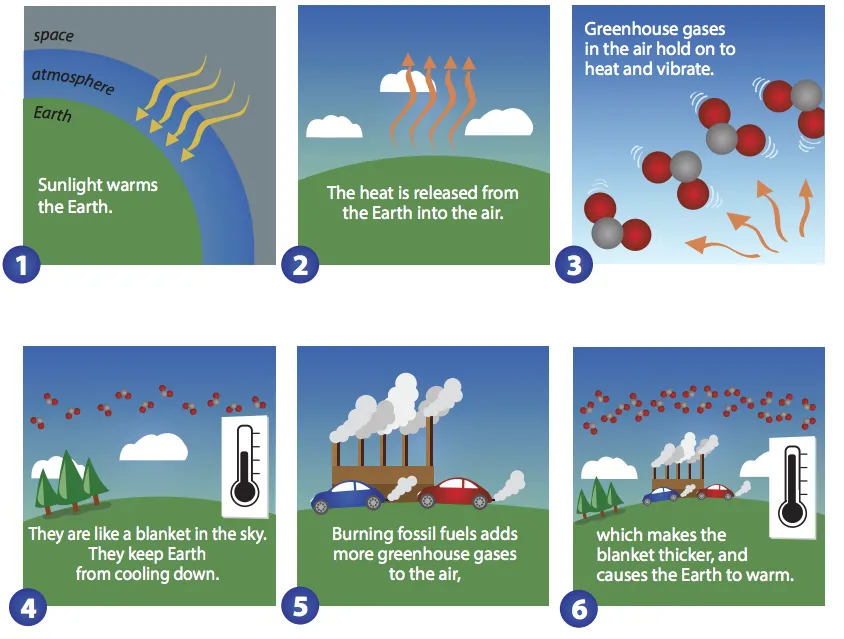Meet the Greenhouse Gases
Greenhouse gases in our atmosphere hold on to heat. When a greenhouse gas molecule lets go of the heat, it’s caught by another greenhouse gas molecule, or it makes its way out to space.
Most of our air is nitrogen and oxygen molecules, which don’t trap heat. Only a tiny amount of our air is greenhouse gases, but they have a big impact. Greenhouse gases include water vapor, methane, ozone, nitrous oxide, and carbon dioxide.
Some carbon dioxide (CO2) in our air is natural. Having some greenhouse gases in the air keeps the temperature warm enough for plants and animals. However, there can be too much of a good thing. People have been adding more of it to the air by burning coal, oil, and gas. This heats the Earth.
Plants use carbon dioxide and sunlight to make their own food and grow. The carbon becomes part of the plant. Plants that die and become buried may turn into fossil fuels like coal and oil over millions of years. When we burn fossil fuels, the carbon quickly gets into the atmosphere as carbon dioxide.

UCAR/L.S. Gardiner